Lifebirds #89-100 - England Day 2
Friday, July 20, 2006: Early birds
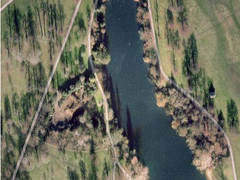
Joann and I found an Eurasian Blackcap singing in a small cluster of trees and shrubs just to the east of The Serpentine (this long, narrow lake forms a part of the border between Hyde Park and Kensington Gardens). This area can be seen just to the left of the water in this Google map photo. There is a statue of Peter Pan near this spot. (Click on the image for an annotated map of our sightings.)
What a vocalist this bird is! It reminded us very much of the familiar (to us) Gray Catbird, but it isn’t actually a close relative. The resemblances are superficial, but uncanny: gray bird, black cap, voluble singer. (Take a look at its Wikipedia entry.)
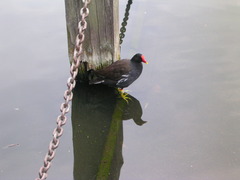
We worked hard to help a little old English lady find the bird. She heard it, maybe before we did, but could not see it for the longest time. She was using an impossibly small pair of old Porro prism binoculars that couldn’t have been much better than the naked eye for birdwatching. But she’d probably used them for thirty years and couldn’t be persuaded to give one of our pairs a try. She said she lived in the neighborhood of the park, had watched birds in it for many years, and had used to submit reports to a local ornithologist. She told us that, sadly, the numbers of birds in the park just weren’t what they used to be, and that it had been a long while since she’d seen a Blackcap. We were really happy to help her find it!
The photos of the Common Gallinule[1] above, the Grey Heron, and the lousy one of waterfowl sitting on posts in the water were taken on this day. Others are from a visit to Regent’s Park later in the week and from our 2016 Baltic cruise. Our photos of the more exciting (to us) passerines, with one exception, do not exist.
The annotated map (you did look at it, right?) identifies the location of the Blackcap. All passerines were found near it, with two exceptions. The Eurasian Magpies were everywhere, mostly on the open areas of dry grass. The Great Tit was foraging in trees just inside the fence separating the park from the busy Bayswater Road. (Please click on any photo on this page to access a stunning photo gallery.)

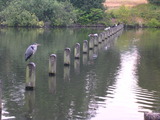
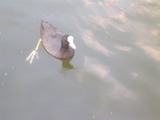
| Species | Great Tit / Parus major |
| Species | Grey Heron / Ardea cinerea |
| Species | Carrion Crow / Corvus corone |
| Species | Eurasian Wren / Troglodytes troglodytes |
| Species | European Robin / Erithacus rubecula |
| Species | Eurasian Blackcap / Sylvia atricapilla |
| Species | Great Crested Grebe / Podiceps cristatus |
| Species | Eurasian Coot / Fulica atra |
| Species | Common Gallinule / Gallinula chloropus |
| Species | Black-headed Gull / Chroicocephalus ridibundus |
| Species | Great Cormorant / Phalacrocorax carbo |
| Species | Eurasian Magpie / Pica pica |
| Where | UK-ENG-Greater London-Kensington Gardens |
| When | Jul 20 2006 |
| With | Joann |
| Number | 89-100 |
See lifebird index.

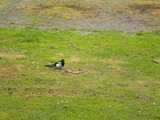
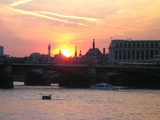



| TITLE |
| England Day 1 – London’s Burning |
| Lifebirds #87-88 – England Day 1 |
| England Day 2 – Take me to the River |
| Lifebirds #89-100 – England Day 2 |
| England Day 3 – Brighton Sunny |
| England Day 4 – Sweet Swans of Avon |
| England Days 5-6 – Cambridge and Bath |
| Lifebirds #101-105 – England Days 3-6 |
| England Days 7-8 – Parks and the Tower |
| Lifebirds #106-115 – England Day 7: MBS! |
—
Notes
- We saw this bird as a Common Moorhen in 2006. It has since been renamed Common Gallinule by the ornithologists who decide these things. Incidentally, though this was the first time Joann and I saw this species, only weeks later we saw one a few miles from our home in Minnesota.
Speaking of names, the IOC’s world list of bird names is what I use in my “lifer table.” What the English call simply “Blackcap” is “Eurasian Blackcap” on the world list. This goes for the other species listed above (Eurasian and European dropped from names).
Also, what the British know as a “Wren” and the world list an “Eurasian Wren” was known in the U.S. as a “Winter Wren” until quite recently. But ornithologists—one-upping Solomon—split the species Troglodytes troglodytes three ways. West of the Rockies the new Troglodytes pacificus is known as the “Pacific Wren.” East of the Rockies (and occasionally in our backyard) we see Troglodytes hiemalis, the “Winter Wren.” This split was the result of DNA studies and behavioral factors. The DNA evidence is fascinating and suggests that the last common ancestor of the Eurasian and Pacific Wrens lived 4.3 million years ago! [^]
